PHOTOS: According to Hindu mythology when Lord Brahma – the creator, created this world he made the flowers, trees, fishes, animals and insects, but his personal favorites were the plants and the flowers. One day to his horror, Lord Brahma found all plants had been stripped off their leaves. Soon, he found the culprit. It was a caterpillar, who confessed that it was so hungry it could not resist eating all the green and tender leaves. Now the creator was angry and he cursed the caterpillar that from that day it would become like a stone with no legs, now wings, no mouth to eat! The caterpillar turned into a lifeless lump instantly, hanging from a branch. Soon the other animals could not bear to see the caterpillar’s condition and they requested the Lord to forgive the caterpillar. Brahma finally relented and changed the curse to last only for a few days, after which the caterpillar turned into a beauty with wings called the butterfly.
India’s biodiversity allows a vast number of different species of butterflies to thrive here. There are approximately 1800 species of butterflies found here of which almost 20 percent are endemic to this country.
Here is tip of the iceberg – seven of the many spectacular butterflies found in India,
1
Andaman Crow (Euploea andamanensis)
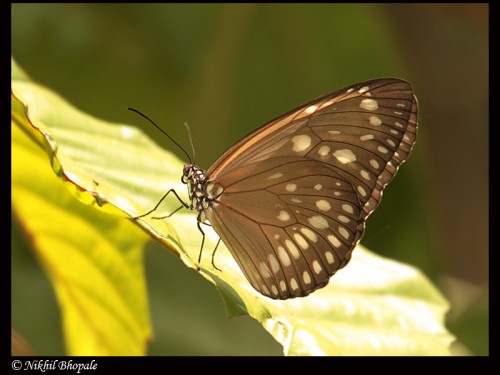
IUCN Red list Status – Vulnerable
Only found in Andaman & Nicobar Islands of India. The size and colour of this butterfly varies depending on where in Andaman they are found – South, North or Central Andaman.
Image courtesy Nikhil Bhopale
2
Tree Nymph butterfly (Idea malabarica)
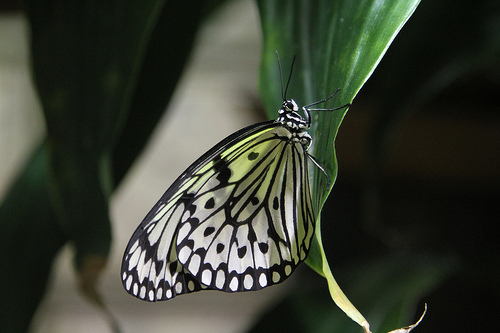
IUCN Red list Status – Near Threatened
Found in Southern India especially the Western Ghats. It is one of the largest butterfly species of India, with wingspan up to 160 cm. Can be easily identified with black spots on off-white grey colored body, it has a gliding flight and habit to hover over a particular spot.
Image courtesy Jim, the photographer
3
Tamil lacewing (Cethosia nietneri)

IUCN Red list Status – Not evaluated
An endemic butterfly found in parts of the Western Ghats mountain range in India. Among the 332 butterfly species found in Western Ghats, 36 species are found nowhere else in the world.
Image courtesy Wikimedia
4
Orange oak leaf or dead leaf butterfly (Kallima inachus)


IUCN Red list Status – Least concern in India
Found all over north, north eastern, central and few parts of western India. Looks like a dead leaf when wings are closed but spectacular blue and orange colored patterns seen when wings are open.
Image courtesy flickr and silveroftheluna
5
Emperor of India butterfly aka – Kaiser-i-hind (Teinopalpus imperialis)
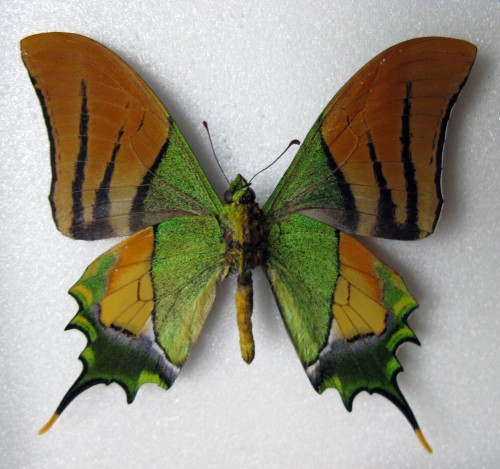
IUCN Red list Status – Near Threatened
This magnificent butterfly is found along the Eastern Himalayas (West Bengal, Meghalaya, Assam, Sikkim and Manipur) in India. It has a strong and fast flight. It usually flies at tree-top level but when there is strong morning sunlight it descends to sit on low vegetation. Although the butterfly is protected under Indian law it is hunted to be supplied to butterfly collectors.
Image courtesy wikipedia
6
Great windmill Swallowtail Butterfly (Byasa dasarada)
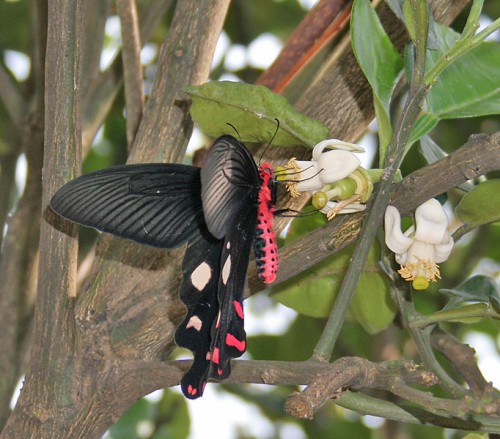
IUCN Red List Status – Not evaluated
Found in northern and north east India. The wavy tail wing with prominent red and white spots is what gives this butterfly its captivating beauty. The pupa or chrysallis of this butterfly is yellow green in colour with blue bands. The pupa squeaks when touched!
Image courtesy wikimedia
7
Callerebia dibangensis (Common name not known)

IUCN Red List Status – Not evaluated
Discovered first in 1987 by Purnendu Roy and scientifically declared as a new species in 2013, this is the only butterfly to have been named after the Dibang valley in Arunachal Prdesh – a known Mecca of butterflies of India.
Image courtesy focussingonwildlife
More Related Stories,
Butterfly Park attracts Hundreds of Winged Visitors
Rare Butterfly Seen After 74 Years
Untouched Horizons: Namdapha National Park

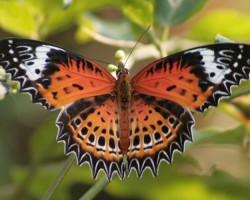
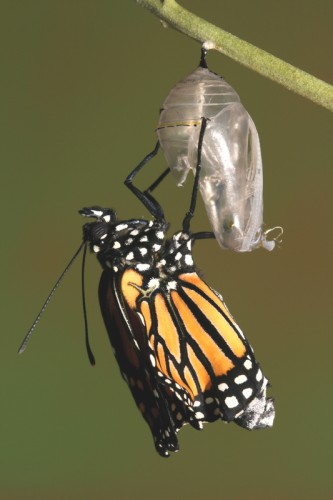
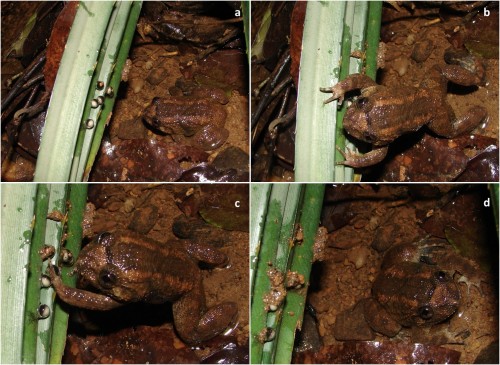
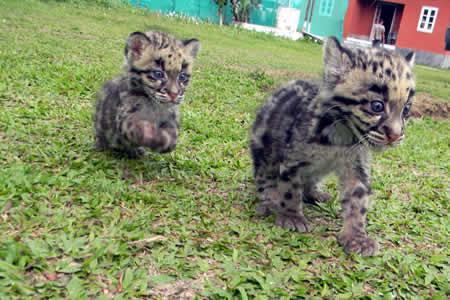
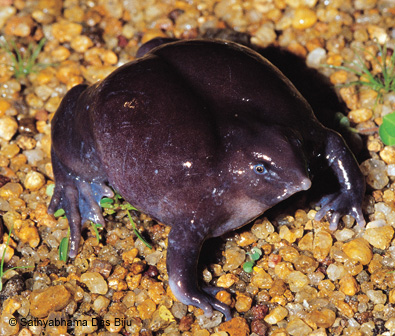

Thank you mam for creating such a site and amazing facts @thank you.
Thank you for visiting.
A very useful site. Could be made more interesting if you include a quiz column. Do include a review of the latest Wild Wisdom Quiz Book (Volume 2).
The butterflies are important bioindicators, which should be protected to conserve the biodiversity and environment. Different species of plants and habitats of Mayureshwar Wildlife Sanctuary attract wide variety of butterflies. They play a vital role in pollination of various flowering plants besides a key component of food chain. Butterflies Biodiversity generally refers to the variety and variability of butterflies on Earth. It defines it in terms of the variability within species, between species and between ecosystems. It is a measure of the variety of butterflies present in different ecosystems. This can refer to genetic variation, ecosystem variation, or species variation (number of species) within an area, biome, or planet. A preliminary attempt on the diversity of butterflies was carried out in Mayureshwar Wildlife Sanctuary of Baramati Tehsil Dist. Pune (India) and its vicinity. from June 2013 to May 2016 using transects lining method. The Mayureshwar Wildlife Sanctuary Campus is surrounded by lush green hillocks, natural lakes and the sugarcane farms. The total of 96 species of butterflies belonging to 68 genera and five families were recorded during the study period, of which 13 species were under the rare category (included 9 rare* and 4 very rare**). It was observed that the family Nymphalidae represented by 23 genera and 34 species was the most dominant followed by Lycaenidae (19 genera, 20 species), Hesperiidae (13 genera, 15 species), Pieridae (9 genera, 14 species) and Papilionidae (4 genera, 13 species). As the area houses 96 species of butterflies distributed throughout the Mayureshwar Wildlife Sanctuary of Baramati, it can be presumed to have a good diversity of butterflies, which may be attributed to the sprawling lawns and well nurtured gardens that provide a suitable nectar source throughout the varying seasons, and especially the eco-forests that serves a breeding habitat to the butterflies.
Thank you for this valuable information
I recently encountered a butterfly which looked ferocious and had thorned legs. It looked tired. I have a photograph with me.
i want to know which buttrfly was it.
Do send the photo to contact@indiasendangered.com and we will help identify. Thanks.
This site is very interesting for Ento departs …….i want know so many butterflies name…
It helped me very much for my summer school project.
Hello Atula Gupta,
I am so very happy to see this useful website ! Thank you so very much for creating such a site with amazing facts . Thank you.
Thank you. Keep visiting!
Dear Sir/Madam,
Can you send me Endangered Butterflies of Punjab(India) which are also included in Schedule -1 of the Indian Wildlife(Protection)Act,1972.
Gurmit Singh